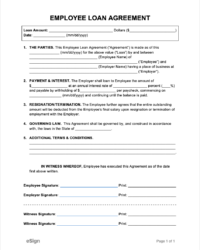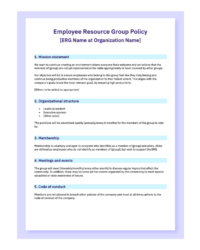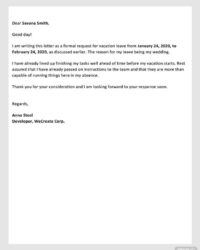Utilizing a pre-designed format offers several advantages. It simplifies the process for employees, reduces processing time for employers, and ensures all necessary information is collected. This minimizes the potential for errors or omissions, leading to more efficient loan processing and decision-making. Furthermore, a consistent structure allows for easier tracking and analysis of loan data, supporting better financial management within the organization.
The following sections will delve into the key components of a well-designed form, explore best practices for implementation, and offer practical advice for both employees completing the application and employers managing the process.
Key Components of a Staff Loan Application Form
A well-structured application form ensures all necessary information is captured, facilitating efficient processing and informed decision-making. The following elements are essential:
1. Employee Information: This section captures basic identifying information, such as the employee’s full name, employee ID, department, and contact details. Accurate personal data ensures proper identification and communication.
2. Loan Details: The requested loan amount, intended purpose, and desired repayment period are crucial components. Clear articulation of these details helps assess the loan’s feasibility and alignment with organizational policies.
3. Employment History: Information regarding the employee’s tenure within the organization, including start date and current position, provides context for evaluating the request.
4. Financial Information: Relevant financial details, such as current salary and existing debt obligations, allow for a thorough assessment of the employee’s ability to repay the loan.
5. Repayment Plan: A proposed repayment schedule, outlining the frequency and amount of payments, demonstrates the employee’s commitment to fulfilling the loan obligations.
6. Acknowledgment and Agreement: A declaration acknowledging the terms and conditions of the loan agreement, along with the employee’s signature, formalizes the application.
7. Supporting Documentation: Provision for attaching relevant supporting documents, such as pay stubs or bank statements, may be necessary for verification purposes.
These components work together to provide a comprehensive picture of the loan request, enabling a fair and timely evaluation process. A complete application ensures transparency and supports responsible lending practices.
How to Create a Staff Loan Application Template
Creating a standardized staff loan application template requires careful consideration of various factors to ensure clarity, completeness, and compliance with organizational policies. A well-designed template simplifies the application process for employees and streamlines the review and approval process for employers.
1: Define the Purpose and Scope: Clearly outline the types of loans covered by the template, such as emergency loans, education loans, or housing loans. Specify eligibility criteria and any limitations on loan amounts or repayment terms.
2: Gather Essential Information: Determine the necessary employee data points for the application, including personal information, employment history, and financial details. Ensure compliance with data privacy regulations.
3: Structure the Template: Organize the template logically into sections for easy navigation and completion. Use clear headings and subheadings to guide applicants through the required information.
4: Incorporate Clear Instructions: Provide concise and unambiguous instructions for each section of the application. Explain the purpose of each field and the required format for responses.
5: Establish a Review and Approval Process: Outline the workflow for reviewing and approving loan applications. Define roles and responsibilities for each stage of the process.
6: Ensure Legal Compliance: Review and update the template periodically to comply with relevant laws and regulations, including data protection and lending practices. Consult with legal counsel as needed.
7: Test and Refine: Pilot test the template with a small group of employees to gather feedback and identify any areas for improvement. Refine the template based on feedback and implement it organization-wide.
8: Communicate and Train: Clearly communicate the new template and process to all employees. Provide training on how to complete the application correctly and answer any questions they may have.
A comprehensive and user-friendly application template, combined with a robust review and approval process, promotes transparency, efficiency, and responsible lending practices within the organization.
A well-designed staff loan application template provides a crucial framework for managing employee loan requests. It ensures consistency, transparency, and efficiency throughout the entire process, from application submission to review and approval. Standardized forms facilitate better financial management within organizations by enabling accurate data collection, streamlined processing, and informed decision-making. Key components such as clear instructions, comprehensive employee and financial information sections, and a well-defined repayment plan contribute to a robust and effective template.
Implementing a clear and accessible process benefits both employees and employers. It empowers employees by simplifying the application procedure and providing access to financial assistance when needed. Simultaneously, it equips employers with the tools to manage loan requests responsibly and ensure equitable access to this valuable benefit. Organizations are encouraged to prioritize the development and implementation of robust staff loan application templates as a key element of their financial well-being programs.


